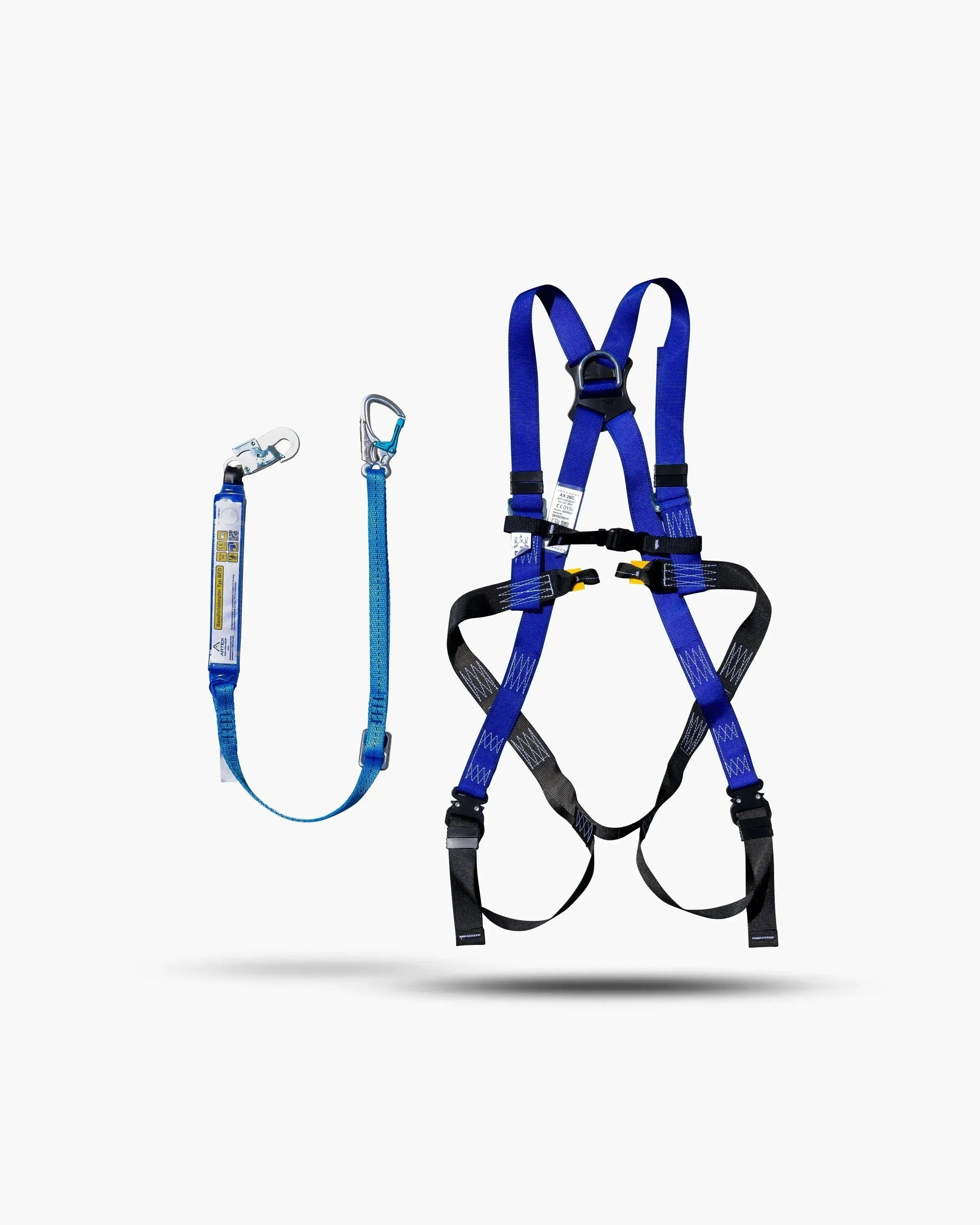Work platforms have become indispensable in the construction and industrial sectors. They enable safe working at heights and offer significantly more flexibility than conventional scaffolding or ladders. However, any work at height always involves a certain amount of risk. Falls are among the most common causes of accidents, which is why there are clear regulations regarding fall protection.
A key question is: When is the use of personal protective equipment against falls from a height ( PPE) mandatory? While a railing is considered sufficient protection for some work platforms, the use of a safety harness is mandatory for others. But what regulations apply exactly? At what height is fall protection required? And what requirements must be met for safe use? In this article, you'll learn when you need fall protection, what to consider when using PPE, and when training is mandatory.
At what height is PPE mandatory on a mobile elevating work platform?
Many people assume that fall protection is only required above a certain height. In reality, however, the requirement to wear personal protective equipment depends not only on the height, but also, and above all, on the design of the work platform and the specific location .
Scissor lifts with fixed railings generally do not require a harness, as the railing already provides protection against falls. This is different for telescopic and truck-mounted lifts . Due to the design of these machines, sudden jolts can occur during movement or pivoting. Without proper safety equipment, there is a risk of a person being ejected from the work platform. Therefore, fall protection is mandatory.
The location also plays a role. If a work platform is used over water, machinery, or busy roads, wearing a harness may be mandatory regardless of its design. The general rule is: Where a fall is not prevented by a fixed railing or where special circumstances increase the risk, PPE is mandatory.
Protection against ejection
A common misconception is that fall protection systems only protect against a direct fall. However, one of the greatest dangers when working on aerial work platforms is ejection . Sudden movements, uneven ground, or abrupt stops can cause the operator to be ejected from the work platform.
For this reason, the wearing of personal protective equipment (PPE) against falls from a height is mandatory for many mobile elevating work platforms . This not only depends on the height, but also on the platform's movement and the possibility of being ejected over the edge .
The German Industrial Safety Ordinance (BetrSichV) requires that work equipment be used as intended . This means that each aerial work platform must be individually assessed to determine which protective measures are required.
The correct anchorage device is crucial. The full body harness must be attached to a designated anchorage eyelet , and the length between the anchor point and the fall arrest system should be selected to prevent excessive fall height . Some applications also require a retractable fall arrester (HRA) or a shock absorber to further reduce mechanical hazards .
Remember: The best protection against ejection is properly fitted PPE in conjunction with a suitable anchor point . The correct application and use of PPE should be learned in a PPE training course – only then can the system save lives in an emergency!
What should be considered when using PPE on mobile elevating work platforms?
Wearing a harness alone is not enough to ensure safe protection. It is crucial that personal protective equipment is used correctly. A key factor is choosing the right anchor point . The harness must not be attached to any location on the work platform, but must be connected to a designated anchor point.
The length of the lanyard is equally important. If the lanyard is too long, it can lead to a dangerous pendulum fall. In most cases, a restraint system is a better choice than a fall arrest system alone. The length of the harness is adjusted so that falling out of the cage is impossible.
Another aspect is regular equipment inspection. Safety harnesses, lanyards, and carabiners are subject to natural wear and tear. They should therefore be checked regularly and replaced immediately if there is any visible damage.
Last but not least, anyone using PPE should have completed appropriate PPE/PPE training. Incorrect use can result in the protective equipment not working properly or even create additional hazards.
When is PPE training required?
Even the safest harness is useless if it's worn or used incorrectly. Therefore, training in safe work with PPE is required by law. This training must be provided if:
- a company employs employees in areas with a risk of falling,
- a work platform is used,
- there are special risks associated with the location (e.g. over water or machinery),
- an annual repetition of the training is required.
Since this is a legal requirement, PPE cannot simply be used at one's own discretion. Failure to receive adequate training not only risks one's own safety but also exposes the company to severe penalties.
We offer PPE training courses where you'll learn how to properly secure yourself and use your protective equipment correctly. This way, you can minimize risks and easily comply with legal regulations.
Which helmet is required when using PPE?
If you're using a harness, you should also consider appropriate head protection. A conventional construction helmet isn't sufficient in this case, as it can easily slip or even fall off in the event of a fall. Therefore, a helmet with a chin strap is required.
The best helmets are those that comply with EN 12492 and are specifically designed for work involving a risk of falls. These helmets fit securely on the head, provide protection from falling objects, and stay in place even in the event of a sudden jolt. Those who regularly work on work platforms should look for a lightweight and well-ventilated model for increased comfort.
Conclusion: Safety first – always take seat belt use seriously!
The regulations regarding mandatory fall protection for mobile elevating work platforms are not just a formality, but a vital safety measure. The requirement to wear a harness depends not only on the height, but also on the platform's design and the specific risks of the work site. Anyone using PPE should know exactly how to use it correctly – and this includes training.
Would you like to learn more about the safe use of aerial work platforms or complete PPE training? We're happy to advise you!















Share:
Forklifts for seasonal peaks: Why renting is more worthwhile than leasing
What characterizes a good access platform rental company?